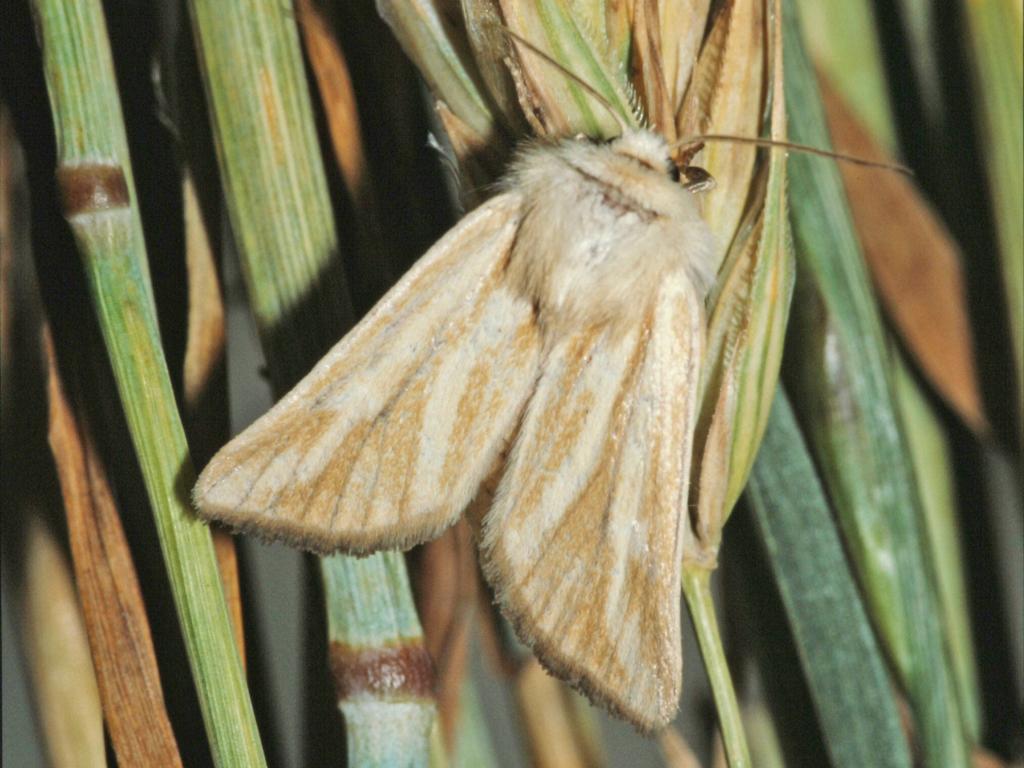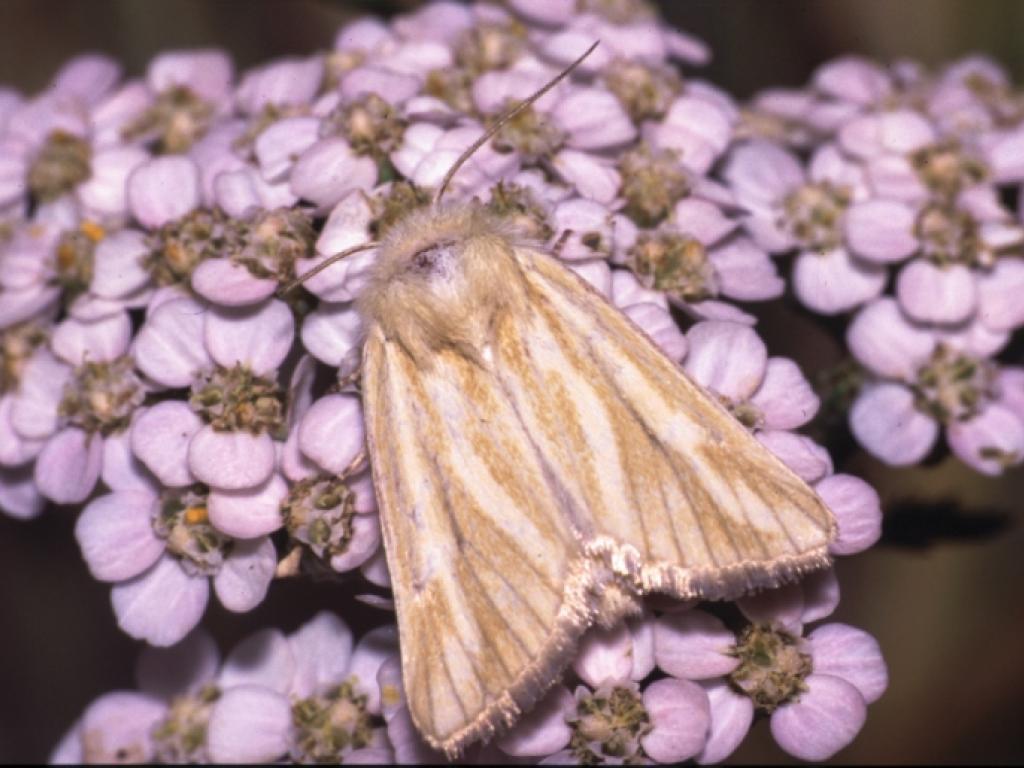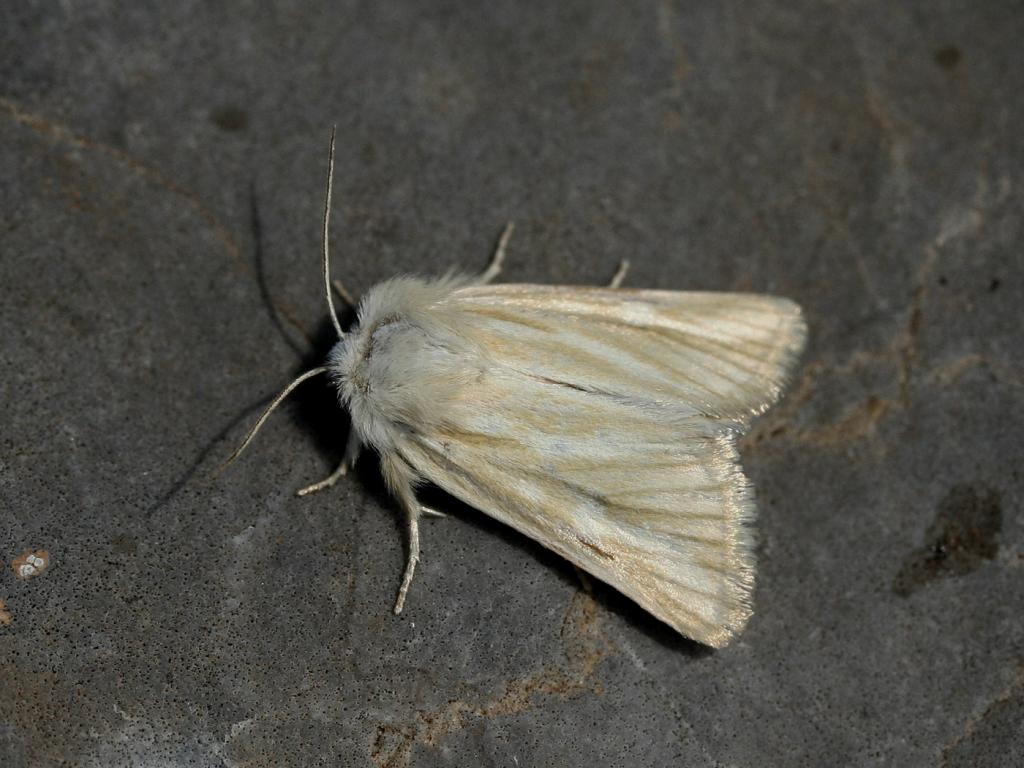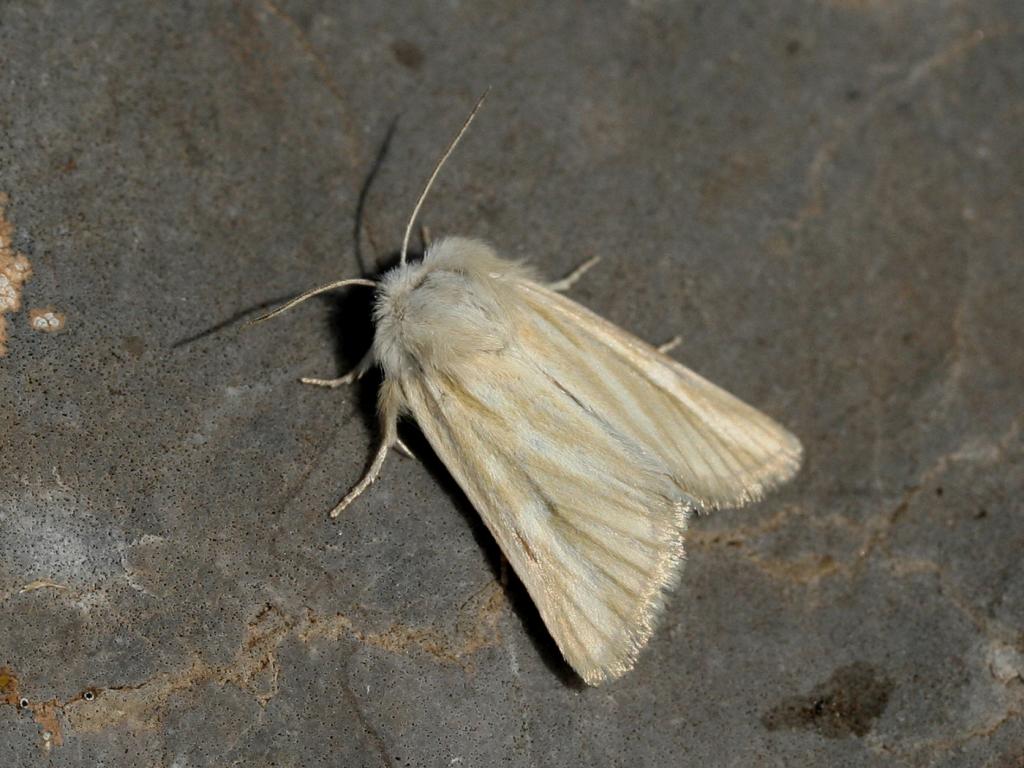The Brighton Wainscot is a straw-coloured moth with two distinctive pale broad stripes. It was first seen in Britain near Brighton in the late 19th century, which gives it its common name. During most of the 20th century, it appeared to be thriving and was widely recorded across southern England but has since rapidly declined.
It overwinters as an egg which is laid on the foodplant in late summer. The larvae hatch in late spring or early summer. They pupate in the ground between June and July.
Flight Times
The adults have one generation from late July to mid-August and are sometimes disturbed during the day from farm machinery.
Size and Family
- Medium-sized
- Wingspan Range – 28-34mm
- Family – Xyleninae
Conservation Status
- Proposed Red Data Book species
- Formerly Nationally Scarce A
- Priority species in the UK Biodiversity Action Plan
Caterpillar Food Plants
The larvae feed inside the stems of various grasses and on the grains of cereal crops.
Habitat
It mainly lives in the grassy margins of cereal fields.
Distribution
- It was last recorded from a single site on Salisbury Plain in Wiltshire but is possibly now extinct in Britain.
- Countries – England

Brighton Wainscot - David G. Green
Brighton Wainscot
David G. Green

Brighton Wainscot - David Green
Brighton Wainscot
David Green

Brighton Wainscot - David G. Green
Brighton Wainscot
David G. Green

Brighton Wainscot - David G. Green
Brighton Wainscot
David G. Green

